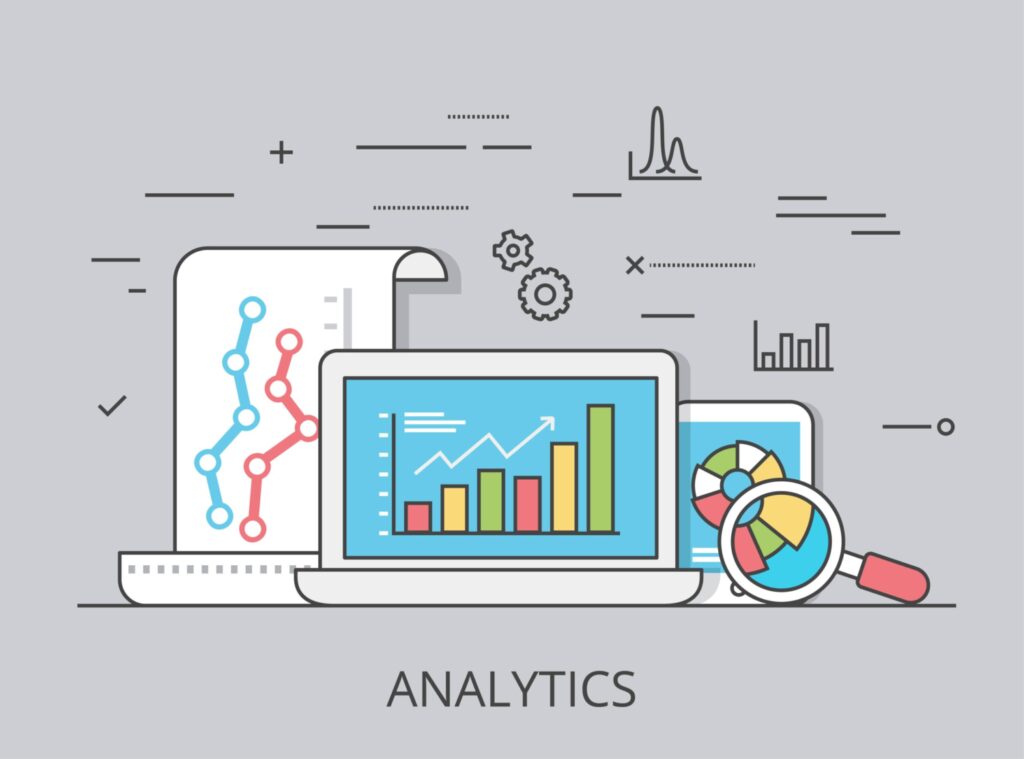
Product analytics nowadays is used by every business that has a product. When we say a product, think of Netflix or Airbnb or Uber, etc. All of them are product-based companies.
All of such companies and even those who don’t have a specific product, use product analytics and its capabilities in some shape or form.
In this article, we will have a high-level overview of what exactly product analytics entails and how it’s an indispensable part of any product-based company in the modern era of business.
What is product analytics?
Product analytics is a data-driven approach to understanding how users interact with a given product or service. It involves collecting and analyzing data to gain insights into user behavior, demographics, product performance, and opportunities for improvement.
The goal is to optimize the user experience and drive business success by identifying and addressing key pain points and opportunities in the product.

Some of the most common types of data used in product analytics include:
User behavior data: This includes information about how users interact with the product, such as clicks, page views, and time spent on the site or app.
Demographic data: This includes information about the user’s age, gender, location, and other characteristics that can help businesses understand their target audience.
Product performance data: This includes metrics such as conversion rates, bounce rates, and retention rates, which can help businesses understand how well the product is performing and where there may be opportunities for improvement.
By collecting and analyzing this data, businesses can gain insights into user behavior and identify key pain points and opportunities for improvement.
Here are a few examples where companies leverage product analytics to solve certain issues.
- Users are dropping off at a certain point in the checkout process, what could be the case? Maybe simplifying the checkout process, maybe adding more payment options.
- How would users react to certain design changes on a particular screen (say home screen), would it lead to better engagement, or would that negatively impact the user experience?
- You want to understand what kind of promotions would work the best in terms of the ROI, again product analytics with some experimentation might help.
Why is product analytics important?
Product analytics is important for a number of reasons. Here are some of the key benefits companies use product analytics for.

Improving user experience: By understanding how users are interacting with their products, businesses can identify areas where the user experience can be improved. For example, they may discover that users are having trouble finding a specific feature, or that they are experiencing slow load times. By addressing these issues, they can improve the overall user experience and keep users engaged with their product.
Identifying pain points: Product analytics can help businesses identify key pain points in their product or service, such as areas where users are dropping off or experiencing frustration. By addressing these pain points, they can improve user satisfaction and retention rates.
Driving business success: By optimizing the user experience and addressing pain points, businesses can drive success by increasing conversion rates, retention rates, and overall revenue, better customer service, etc.
Measuring performance and providing insights: Product analytics allows businesses to measure the performance of their product or service over time. By tracking metrics such as conversion rates, bounce rates, and retention rates, they can see how their product is performing and where there may be strategic opportunities for improvement.
How is Product Analytics typically implemented?
Though different companies might take slightly different approaches, the general implementation framework stays more or less the same.
Defining Goals: Goals should be defined before data collection begins, to ensure that the right data is collected and analyzed to achieve those goals.
Generally, as a company, you ask yourself what are you trying to do.
Are you trying to improve the user experience, increase conversion rates, or measure the performance of your product? Defining your goals will help you focus your efforts and ensure that you’re collecting the right data.
Choosing the Right Metrics: After the goal setting, metrics relevant to the defined goals should be chosen, to provide the most meaningful insights for decision-making.
There are many different metrics to choose from, such as conversion rates, retention rates, and engagement rates. Choose the metrics that are most relevant to your goals and that will provide the most meaningful insights.
Selecting Tools: The most appropriate tools for collecting and analyzing product analytics data should be selected, based on the specific needs and requirements of the business.
There are many different tools available for collecting and analyzing product analytics data, such as Google Analytics, Mixpanel, and Amplitude. Choosing the tools that are best suited to your needs and that provide the functionality you require.
Setting up a Tracking System: Once you’ve chosen your tools, you’ll need to set up your tracking. This involves adding tracking codes to your website or app so that you can start collecting data.
Analyzing Data: Once you’ve started collecting data, Data should be regularly analyzed to identify patterns, trends, and opportunities for improvement, which can then be acted upon to optimize the performance of the product or service.
Taking Action: Finally, use the insights you’ve gained from your product analytics to take action and make improvements to your product or service. This may involve making changes to the user experience, adding new features, or optimizing your marketing strategy. By taking action based on your product analytics, you can improve the performance of your product and drive business success.
Conclusion
Product analytics is a powerful tool for understanding how users interact with your product or service. By collecting and analyzing data, businesses can gain insights into user behavior, identify pain points, and drive business success. To implement product analytics in your own organization, define your goals, choose your metrics, select your tools, set up your tracking, analyze your data, and take action based on your insights. With the right approach to product analytics, you can optimize your product and stay ahead of the competition.